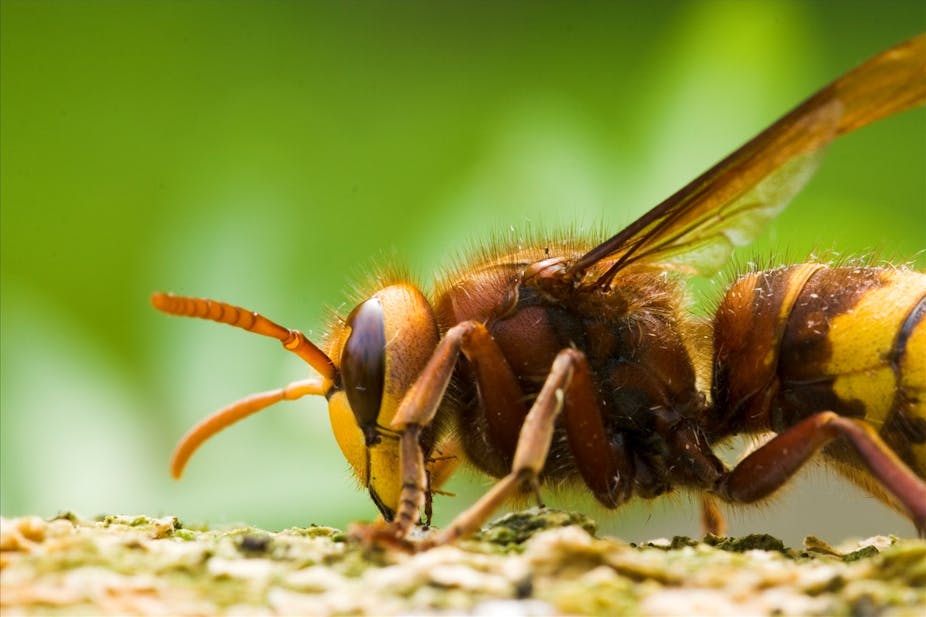Hornets put fear into the minds of most, but there is a parasite that the hornets fear (if indeed they are capable of fear). Sphaerularia vespae is a parasitic nematode that infects the Japanese yellow hornet (Vespa simillima). The infection invades and resides in the abdomen of female hornets. The nematode sterilises the host (much like other parasitic castrators), turning her into a cozy nursery for baby worms. But a new study has shown that they are capable of doing more than just making the hornet barren.
A 2007 study observing hornet queens getting caught in bait traps showed that those infected with S. vespae were more susceptible to entrapment. During the autumn, queen hornets not infected with S. vespae visit and poke around various nooks and crannies (usually decayed logs) in the forest to find a spot to hibernate. When the hornet finds a place she likes, she excavates and lines it with plant fibres to make a nest. But queens that have been parasitised and sterilised by S. vespae start visiting decaying logs much earlier during early to mid-summer.
This year, a team of scientists in Japan found out what those infected queens were up to and have published their findings in Insectes Sociaux. For three months between May and August, they made regular weekly visits to predesignated sites in a forest at the foot of Mount Moiwa in Hokkaido. There they set up video cameras to observe the decayed logs.
They witnessed that, unlike other hornets, the nematode-infected queens never dig nor gather nesting material. They simply crawl inside a decayed log, hang out for a while, then fly off. This is because they have become sterilised couriers who visit potential hibernation sites only to deposit the infant-stage S. vespae parasite. A quarter of the infected queens they saw landing on decayed logs offloaded nematodes. The scientists also captured some hornet queens and brought them back to the laboratory for further examination. More than two-thirds of the infected hornets ended up releasing juvenile worms.
When they dissected the hornets to see how many were infected and to check the developmental stage of their parasites, they found a seasonal pattern to the infections. Queens caught during May and June were mostly infected with fully-mature female worms and their eggs, while queens caught between July and August were filled with juvenile worms that were ready to disembark and infect a new host – which just so happens to be the period when parasitised queens start making regular visits to potential hibernation sites.
So that is S. vespae‘s game – use the hornet as a mobile nursery, fly her around during summer to scope out the best pieces of real estate around the forest, then drop off a bundle of worms that can lie in wait like a booby-trap for an uninfected hornet queen to come along and settle in for winter. To complete its life cycle, S. vespae simply take advantage of an existing behaviour (seeking out hibernation sites) from the host’s repertoire, and “switch it on” at a different time of year to fit the developmental schedule of the parasite’s own offspring.
Parasite manipulation isn’t necessarily about teaching an old host new tricks, but to get the host to perform the tricks that it already knows in a new context.
This is an edited version of a post that appeared on Tommy Leung’s blog.

